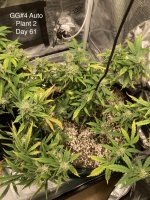AliceDAnon
Active member
I trimmed off some of the dead material right before they went to sleep.
I think I'm starting to get my PPFD in the right spot...


I think I'm starting to get my PPFD in the right spot...



